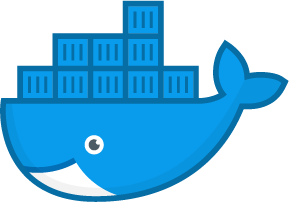Writing Dockerfile with Hello Python Script Added
Pre-requisite:
Tested Infrastructure
| Platform | Number of Instance | Reading Time |
|---|---|---|
| Play with Docker | 1 | 5 min |
Pre-requisite
- Create an account with DockerHub
- Open PWD Platform on your browser
- Click on Add New Instance on the left side of the screen to bring up Alpine OS instance on the right side
[node1] (local) root@192.168.0.38 ~
$ mkdir /test
[node1] (local) root@192.168.0.38 ~
$ cd /test
[node1] (local) root@192.168.0.38 /test
$ pwd
/test
Open a file named ‘Dockerfile’ with a text editor.
[node1] (local) root@192.168.0.38 /test
$ vi Dockerfile
Writing a Dockerfile
Setting a Base Image using FROM keyword
FROM ubuntu
Thus, our image would start building taking base as Ubuntu.
Defining the Author (Optional) using MAINTAINER keyword
MAINTAINER Prashansa Kulshrestha
Running a commands on the base image to form new layers using RUN keyword
RUN apt-get update
RUN apt-get install python
Since, the base image was Ubuntu, we can run Ubuntu commands here. These commands above install python over Ubuntu.
Adding a simple Hello World printing python file to the container’s file system using ADD command
ADD hello.py /home/hello.py
ADD a.py /home/a.py
We will place our hello.py and a.py files in the newly created directory itself (/test). ADD command would copy it from /test (current working directory) of host system to container’s filesystem at /home. The destination directories in the container would be created incase they don’t exist.
Code for hello.py:
print ("Hello World")
Code for a.py:
print ("Overriden Hello")
Specifying default execution environment for the container using CMD and ENTRYPOINT
These keywords let us define the default execution environment for a container when it just initiates from an image or just starts. If a command is specified with CMD keyword, it is the first command which a container executes as soon as it instantiates from an image. However, command and arguments provided with CMD can be overridden if user specifies his own commands while running the container using ‘docker run’ command.’
ENTRYPOINT helps to create a executable container and the commands and arguments provided with this keyword are not overridden.
We can also provide the default application environment using ENTRYPOINT and default arguments to be passed to it via CMD keyword. This can be done as follows:
CMD ["/home/hello.py"]
ENTRYPOINT ["python"]
So, default application mode of container would be python and if no other filename is provided as argument to it then it will execute hello.py placed in its /home directory.
Benefit of this is that user can choose some other file to run with the same application at runtime, that is, while launching the container.
So, our overall Dockerfile currently looks like this:
FROM ubuntu
MAINTAINER Prashansa Kulshrestha
RUN apt-get update
RUN apt-get install -y python
ADD hello.py /home/hello.py
ADD a.py /home/a.py
CMD ["/home/hello.py"]
ENTRYPOINT ["python"]
Building a Dockerfile
To create an image from the Dockerfile, we need to build it. This is done as follows:
[node1] (local) root@192.168.0.38 /test
$ docker build -t pythonimage .
The option -t lets us tag our image with a name we desire. So, here we have named our image as ‘pythonimage’. The ‘.’ in the end specifies current working directory i.e. /test. We initiated our build process from here. Docker would find the file named ‘Dockerfile’ in the current directory to process the build.
Running a container from the newly built image
[node1] (local) root@192.168.0.38 /test
$ docker run --name test1 pythonimage
Hello World
[node1] (local) root@192.168.0.38 /test
$
So, here /home/hello.py file placed in the container executed and displayed the output ‘Hello World’, since it was specified as default with CMD keyword.
[node1] (local) root@192.168.0.38 /test
$ docker run --name test2 pythonimage /home/a.py
Overriden Hello
[node1] (local) root@192.168.0.38 /test
$
Here, user specified another file to be run with python (default application for this container). So, the file specified with CMD got overridden and we obtained the output from /home/a.py.
